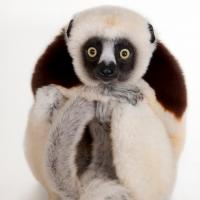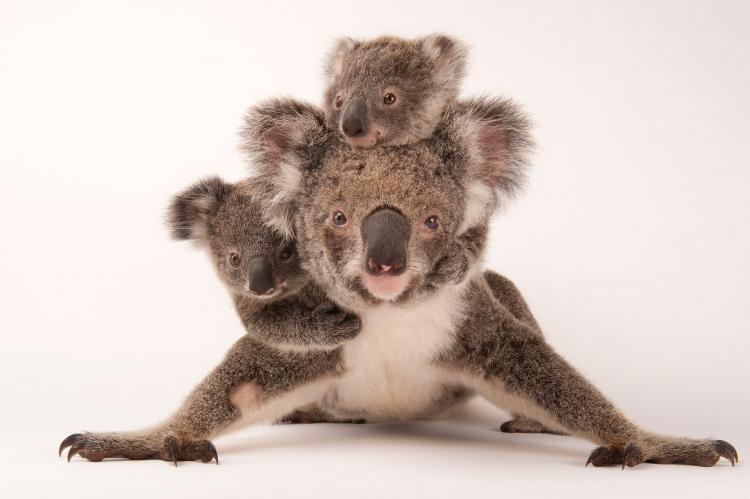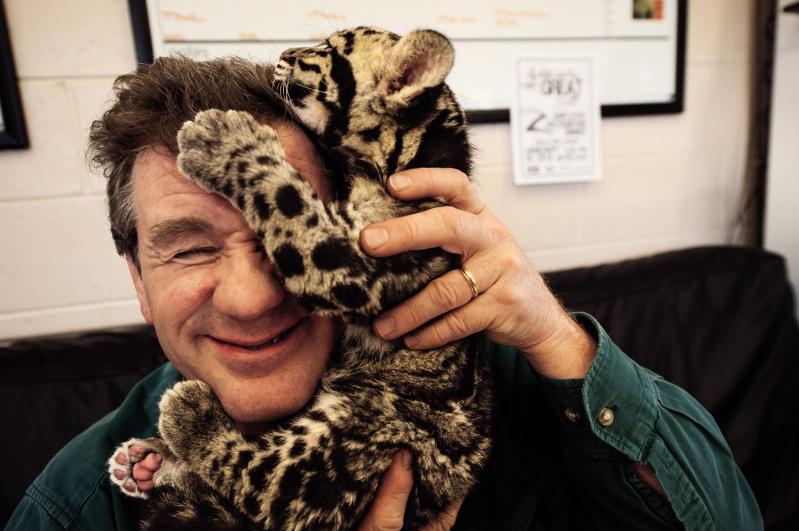Joel Sartore had been a field photographer for National Geographic for 17 years when, in November 2005, his wife, Kathy, was diagnosed with breast cancer. With three young children, he had to curtail the travel that had been integral to his career.
“When my wife got ill, it gave me a chance to stop and think about something I could do that wouldn’t be erased after a month, because the magazine stories are short-lived,” he said during a recent phone conversation.
Thus was born what developed into the National Geographic Photo Ark, an ongoing effort to raise awareness of and discover solutions to some of the most pressing issues affecting wildlife and habitats by creating a photo archive of global diversity.
 The National Geographic Photo Ark exhibition, a selection of approximately 100 images from the archive, can be seen at the Southampton Arts Center from today through Sept. 8, with an opening reception to be held tomorrow from 6 to 8 p.m. The International Center of Photography is the co-sponsor.
The National Geographic Photo Ark exhibition, a selection of approximately 100 images from the archive, can be seen at the Southampton Arts Center from today through Sept. 8, with an opening reception to be held tomorrow from 6 to 8 p.m. The International Center of Photography is the co-sponsor.
“I was just looking for things to shoot on days when Kathy felt better,” Mr. Sartore said. “I knew the director of the Lincoln [Nebraska] Children’s Zoo, which is about a mile from my house, and he humored me and let me photograph a naked mole rat and then a couple of poison dart frogs.” After shooting most of the animals there, and as his wife’s health improved, he started taking overnight trips to other zoos. “It just kind of grew and grew into what you see today.”
The largest single archive of studio-quality photographs of biodiversity, the Photo Ark now includes more than 9,500 species, and Mr. Sartore expects to reach 10,000 by the end of this year. He estimates the completed project will include from 12,000 to as many as 15,000 species.
From the outset, National Geographic was supportive, assigning Mr. Sartore to stories in locations where they knew he would moonlight. “I would do the field work during the day, and if I could I would do portraits wherever I was. These days they outright fund the project as well.” The magazine’s Facebook and Instagram posts reach more than 100 million people.
“There’s a real great opportunity every time we post something to make the world aware of some of these lesser-known species. It’s not just about giraffes and gorillas, it’s about minnows and sparrows and salamanders. A lot of these animals have never been photographed alive before, and it’s our job to tell their story before they vanish.”
On foreign trips he usually has a guide, a translator, and a driver, but, with the occasional exception of his son Cole or daughter, Ellen, he works without a camera crew. “I’ve learned to really respect animals, to be calm, quiet, patient, and to work quickly. It’s kind of necessary that I do the work by myself because we don’t want to stress the animals.”
Smaller animals such as birds or amphibians are often shot through openings in lightweight, portable tent-like structures. Larger animals are usually photographed in large zoo environments, cages, or, when possible, in the wild. Mr. Sartore photographs all his subjects against black or white backdrops so nothing distracts from the animals themselves.
The photographs are all the same size, so as not to favor larger over smaller animals. “Nobody’s thinking about these little guys,” he said. “If you can see it with your eyes, we’ll photograph it.” He has also stressed the positive roles not only of wildlife sanctuaries but also zoos that have captive breeding programs, without which many species would disappear.

Mr. Sartore never questions the project or whether he will be able to see it through. “I’ve always seen the value in spreading the information that the bridge is out, and as these animals go away, so can we.”
In the coming months, Borneo, Brazil, and Germany are on his itinerary. “There are plenty of places to go yet,” he said. “It’s probably going to take another 10 or 15 years to get the last 5,000 species.”
Exhibition-related programs will include talks by wildlife, conversation, and climate photographers, gallery tours with wildlife experts, birding excursions, and workshops in wildlife photography, wildlife sketching, and creating mini animals with Sculpey clay. A complete schedule of public programs can be found on the center’s website.

